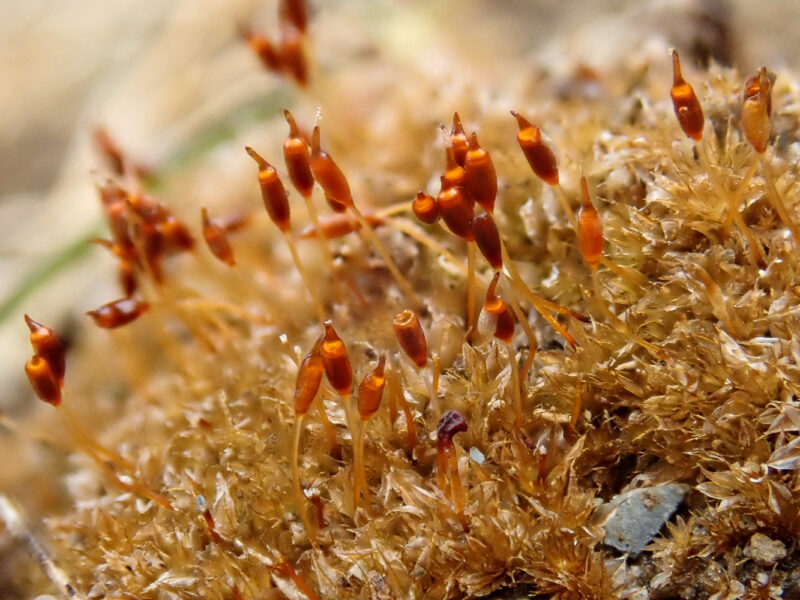Identification notes
You have to be in the richest kind of unimproved chalk (or limestone) grassland at the right time of year (January to May) to stand any chance of finding this tiny, rare moss. It has really exacting habitat requirements, normally being found in a sunny, open place where there is little competition from other bryophytes and plants and where the thin soil has enough of a clay fraction to allow P. caespitosa to complete its life cycle in spring.
If it’s growing in small numbers, you may have to search very carefully to find it. It is a similar size to Microbryum davallianum and Tortula protobryoides. Sometimes it grows in dense patches of hundreds or even thousands of plants and in April, when the capsules are mature, these can be seen from a distance, as they make the ground look red-brown.
Although it sometimes grows with similar-looking species, P. caespitosa stands apart from all of them in having broad, concave perichaetial leaves, which wrap around the base of the seta to form a short sheath. In moist plants, this feature can be seen in the field with a good x 20 hand-lens.
Read the Field Guide account









